
Watch short for this article (5 slides)
Decoding the Slumberous Sky: How Weather Conditions Influence Your Sleep Quality
There's a widely shared comfort in the gentle rhythm of rain on the roof or the distant, low rumble of thunder - sounds many associate with a perfect night's sleep. But is this just a cozy association, or does the weather genuinely hold sway over our slumber? The science suggests it's far more than just feeling; atmospheric conditions like temperature, humidity, barometric pressure, light levels, and ambient sound profoundly interact with our physiology to shape sleep quality. Let's delve into the intricate relationship between weather and sleep, exploring the mechanisms involved and uncovering the optimal conditions for truly restorative rest.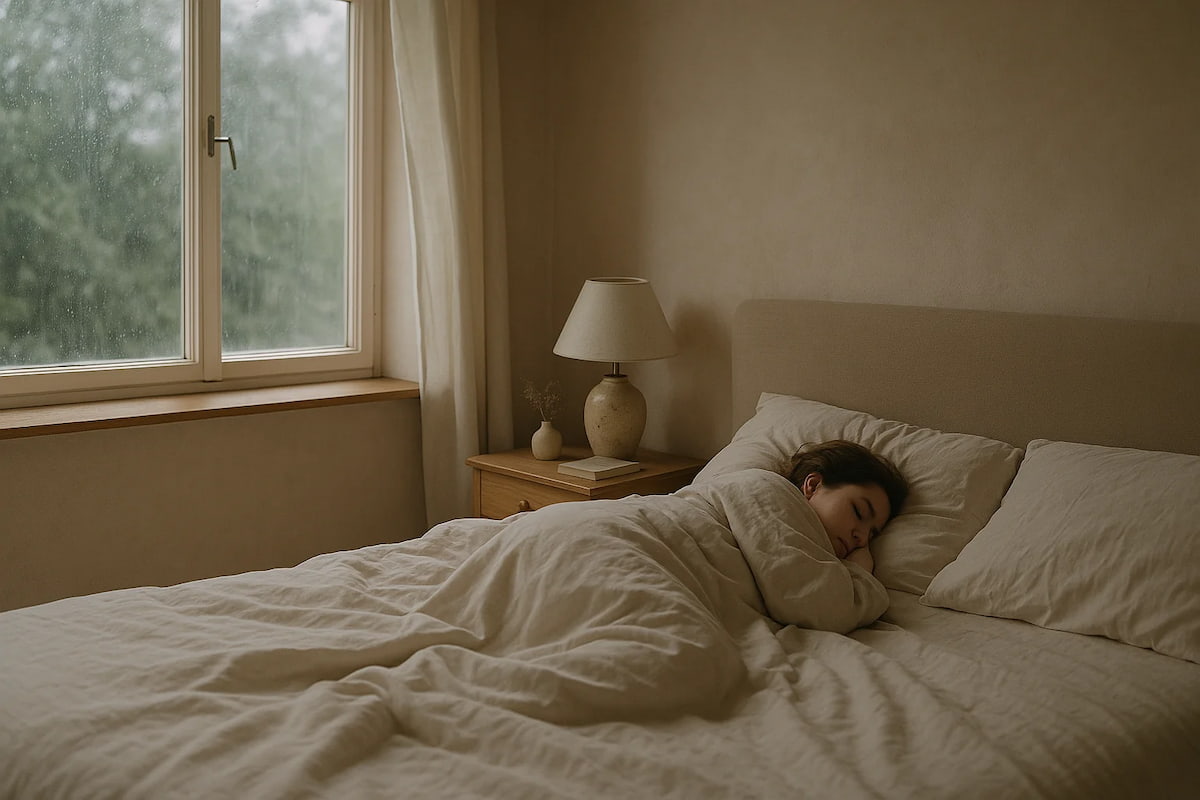
The Interplay: Sleep Physiology Meets Environmental Factors
Human sleep is a complex biological process governed by our internal circadian rhythm (our ~24-hour body clock) and homeostatic sleep drive (the pressure to sleep that builds the longer we are awake). Environmental cues, including weather elements, significantly influence these processes: 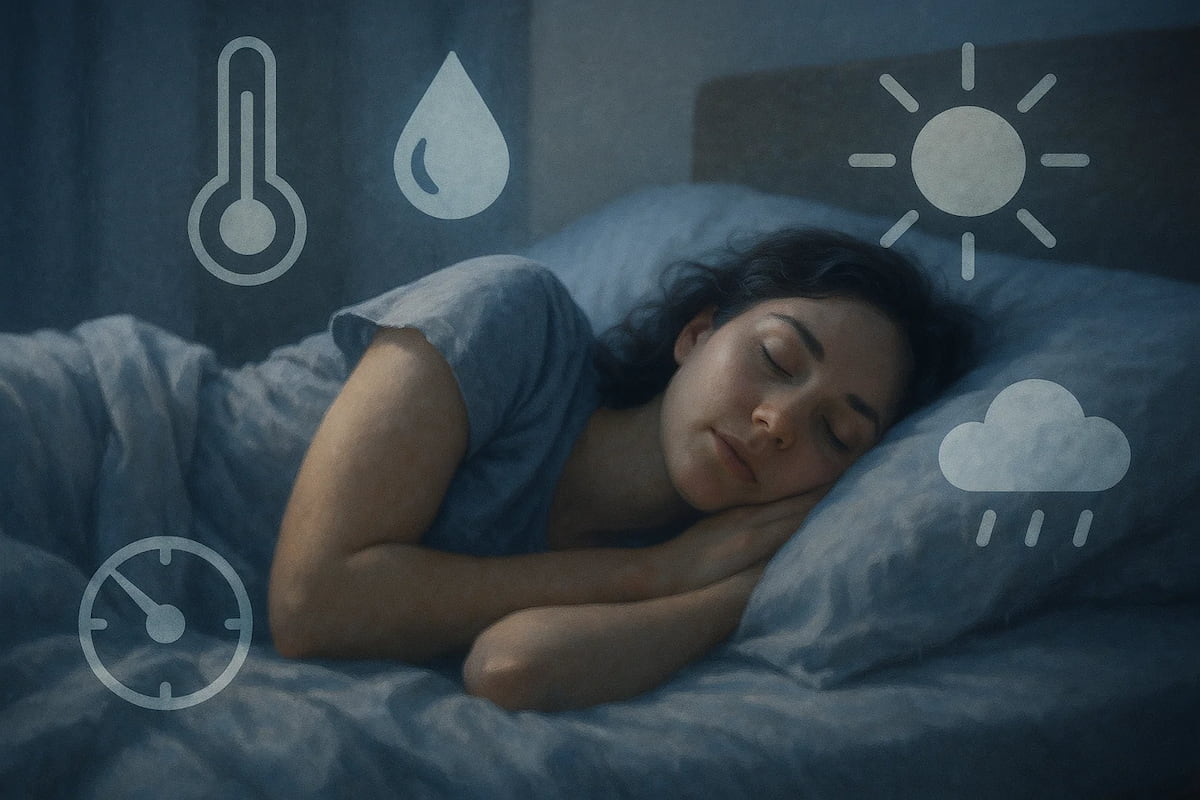
1. Temperature: The Master Regulator
- The Science: Our core body temperature naturally dips by 1-2 degrees Fahrenheit (about 0.5-1 degree Celsius) leading up to and during sleep. This temperature drop is a crucial physiological signal that helps initiate and maintain sleep. An environment that facilitates this natural cooling process promotes better sleep quality, including more time spent in deep (slow-wave) sleep and REM sleep.
- Ideal Range: Most sleep experts recommend a bedroom temperature between 60-67°F (15.6-19.4°C) for optimal sleep. (Source: Sleep Foundation - Best Temperature for Sleep)
- Too Hot: When the ambient temperature is too high, the body struggles to shed heat (vasodilation isn't enough). This can lead to difficulty falling asleep, increased nighttime awakenings, restlessness, and reduced time spent in restorative deep and REM sleep stages.
- Too Cold: Excessively cold temperatures can also disrupt sleep. The body may initiate shivering or constrict blood vessels in extremities to conserve heat, causing physical discomfort that hinders falling asleep or leads to awakenings.
2. Humidity: The Comfort Factor
- The Science: Humidity levels affect both our perception of temperature and our respiratory comfort. The body cools itself primarily through sweating (evaporative cooling).
- Ideal Range: Optimal humidity for sleep is generally considered to be between 30% and 50% relative humidity. (Source: Sleep Foundation - Humidity and Sleep)
- High Humidity (>50-60%): Makes it difficult for sweat to evaporate effectively, making the ambient temperature feel warmer and stickier. This hinders the body's natural cooling process, leading to discomfort, sweating, and disrupted sleep. High humidity also promotes the growth of mold and dust mites, which can worsen allergies and respiratory issues, further impacting sleep.
- Low Humidity (<30%): Can lead to dryness of the skin, eyes, nasal passages, and throat. This can cause irritation, itchiness, sore throat, congestion, increased susceptibility to respiratory infections, and potentially worsen snoring, all of which interfere with restful sleep.
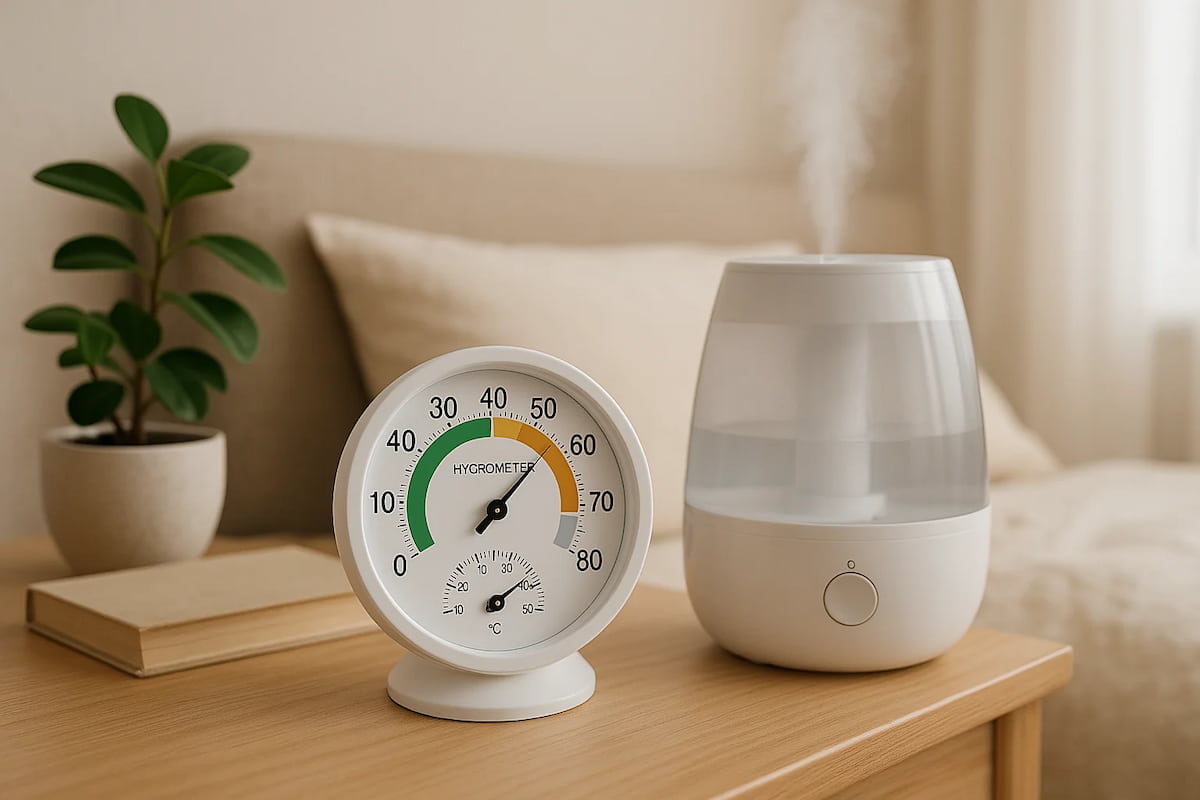
3. Barometric Pressure: Subtle Shifts, Potential Effects
- The Science: Barometric (atmospheric) pressure refers to the weight of the air above us. Changes in pressure, particularly rapid drops often preceding storms, are anecdotally linked to various physical sensations in some individuals.
- Potential Impacts: While direct, robust evidence linking barometric pressure changes directly to sleep disruption in the general population is limited, indirect effects are plausible. Some individuals report experiencing headaches (including migraines) or increased joint pain (especially those with arthritis) during significant pressure shifts. This physical discomfort can certainly make falling asleep difficult or cause nighttime awakenings. Some theories suggest pressure changes might subtly affect oxygen saturation or sinus pressure, but more research is needed. (Source: NIH Study - Barometric Pressure and Headaches - example context) Falling pressure is also often associated with fatigue, potentially influencing daytime sleepiness patterns.
4. Light Exposure: The Circadian Cue
- The Science: Light is the primary environmental cue synchronizing our internal circadian clock, primarily via specialized receptors in our eyes that communicate with the Suprachiasmatic Nucleus (SCN) in the brain. Exposure to light, especially blue light wavelengths prevalent in sunlight and electronic screens, suppresses the production of melatonin, the key sleep-promoting hormone.
- Weather's Role: Dark, overcast, or rainy days reduce ambient light levels. This diminished light exposure, particularly in the evening, can allow melatonin production to begin earlier, potentially making one feel sleepy sooner. Conversely, bright sunny mornings help reinforce wakefulness and anchor the circadian rhythm. Consistent darkness during the sleep period is crucial for maintaining high-quality, uninterrupted sleep.
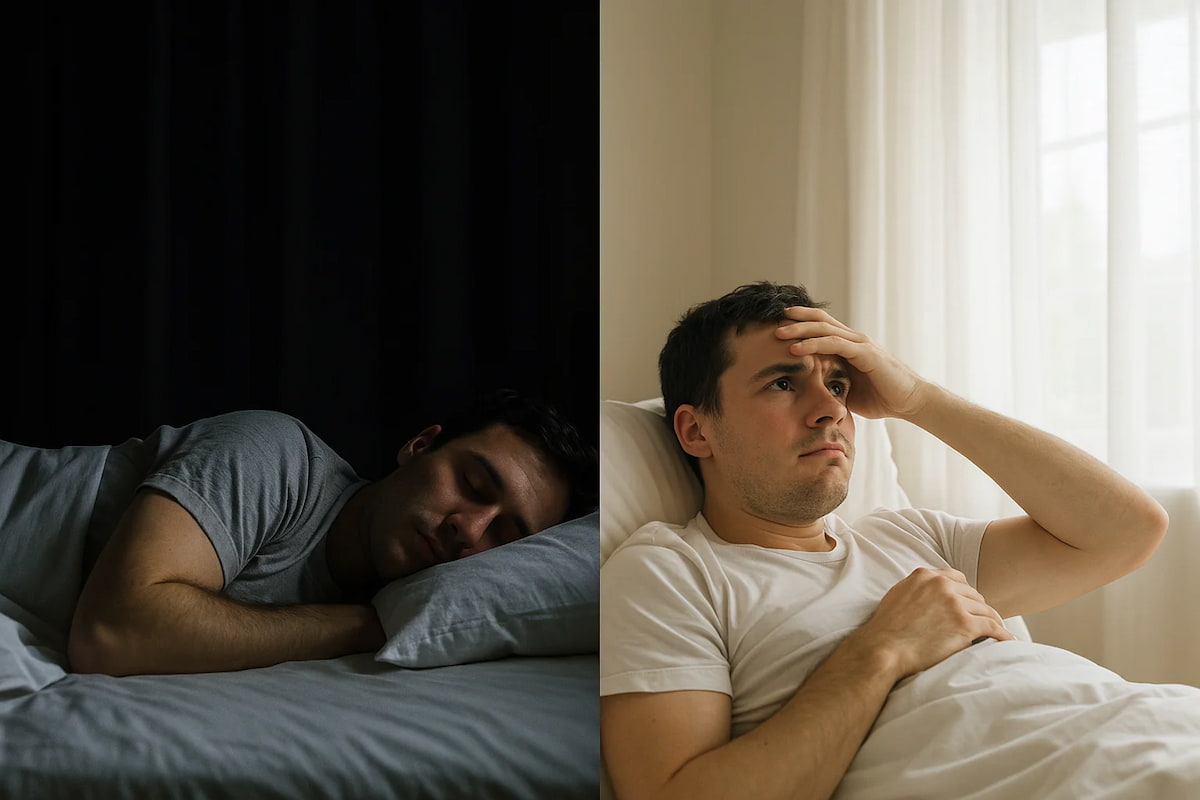
5. Ambient Sound: Lullaby or Disturbance?
- The Science: While our sense of hearing remains active during sleep, the brain processes sounds differently. Consistent, low-level, non-threatening sounds can actually promote sleep by masking potentially disruptive noises. Sudden, loud, or meaningful sounds (like a baby crying or a loud bang) are more likely to cause arousal and awakenings.
- Weather Sounds:
- Rain: The steady, rhythmic sound of gentle to moderate rain often falls into the category of "pink noise." Pink noise has equal energy per octave, meaning lower frequencies are stronger than in white noise. Many find it soothing and relaxing, potentially slowing brain waves and promoting sleep stability. (Source: Sleep Foundation - Pink Noise)
- Wind: Gentle wind sounds can be similarly soothing (like pink or brown noise). However, strong, gusty winds rattling windows or howling can be alarming and disruptive.
- Thunder: Distant, low rumbles might blend into the background soundscape. However, loud, sharp cracks of thunder close by are sudden, high-intensity noises likely to cause awakenings and trigger a stress response (startle reflex).
- White Noise vs. Pink Noise: White noise contains equal energy across all frequencies, often perceived as a static-like hiss. Pink noise has more power in lower frequencies, often perceived as deeper and more natural (like steady rain or rustling leaves). Both can effectively mask disruptive sounds, but many people find pink noise more pleasant for sleep.
The Rainy Day Sleep Mystery Explained
Why does rainy weather seem almost universally sleep-inducing? It's likely a combination of the factors above working in concert:
- Soothing Soundscape: The consistent patter of rain acts as natural pink noise, masking other noises and promoting relaxation.
- Reduced Light: Overcast skies decrease ambient light, encouraging melatonin production and signaling rest time to the brain.
- Cooler Temperatures: Rain often brings cooler air, aligning the external environment with the body's preferred sleep temperature drop.
- Psychological Association: Many people develop positive, cozy associations with rainy days, linking them to relaxation, staying indoors, reading, and comfort – reducing anxiety and promoting rest.
- Negative Ions (Debated Influence): While often cited, the claim that negative ions generated during rainstorms significantly improve sleep by reducing stress lacks strong, consistent scientific evidence. While some small studies suggest potential mood effects, the impact on sleep physiology itself is not well-established compared to factors like temperature, light, and sound. It's best viewed as a minor or unproven contributor.
Crafting Your Ideal Sleep Climate: Tips for All Weather
While you can't control the weather outside, you can exert significant control over your bedroom microclimate to optimize sleep: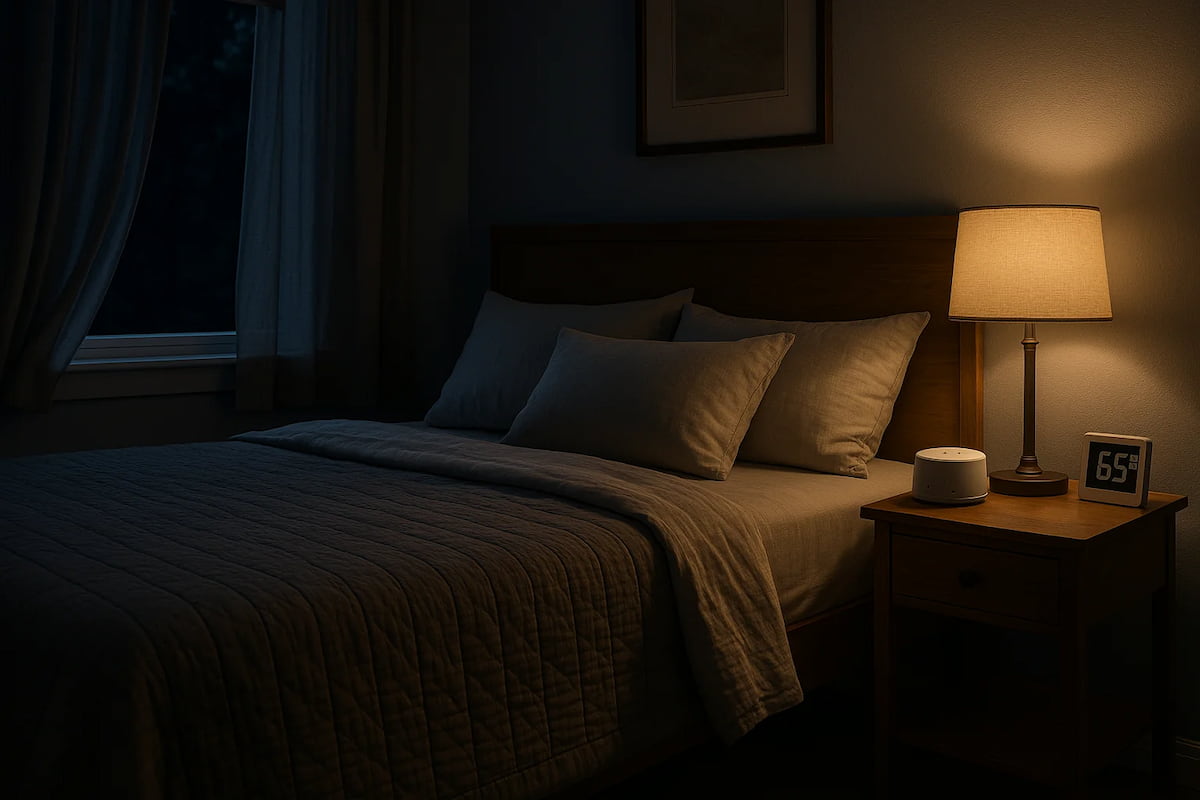
- Master Temperature Control:
- Set your thermostat precisely within the 60-67°F (15.6-19.4°C) range.
- Use ceiling or portable fans for air circulation, which aids evaporative cooling even if it doesn't lower the room temperature itself.
- Choose breathable bedding materials like cotton, linen, bamboo, or wool that wick moisture and regulate temperature effectively. Layer bedding so you can adjust easily during the night.
- Wear breathable sleepwear made from natural fibers.
- Manage Humidity Levels:
- Use a hygrometer (an inexpensive device) to measure your bedroom's humidity.
- If humidity is consistently below 30%, use a humidifier. Choose cool mist or warm mist based on preference (cool mist is often recommended for safety). Clean it regularly according to manufacturer instructions to prevent mold/bacteria growth.
- If humidity is consistently above 50-60%, use a dehumidifier to remove excess moisture. Ensure it's appropriately sized for your room.
- Optimize Your Sound Environment:
- If outside noise is disruptive, use a white or pink noise machine or a smartphone app playing consistent sounds (rain, ocean waves, fan noise) to mask intrusions.
- Consider high-quality earplugs (foam or reusable silicone) if highly sensitive to noise.
- Address sources of indoor noise (e.g., creaky floors, rattling pipes).
- Embrace Darkness:
- Install effective blackout curtains or blinds to block external light completely.
- Remove or cover light-emitting electronics in the bedroom (digital clocks, charging indicators).
- Wear a comfortable eye mask if complete darkness isn't achievable otherwise.
- Minimize exposure to bright light, especially blue light from screens, for at least 1-2 hours before bedtime.
- Ensure Good Air Quality & Ventilation:
- If outdoor air quality allows, slightly opening a window can improve ventilation and provide fresh, cool air.
- Consider using an air purifier with a HEPA filter if allergies or poor air quality are concerns.
- Maintain Consistency:
- Stick to a regular sleep-wake schedule, even on weekends, regardless of the weather. This reinforces your body's natural circadian rhythm.
Conclusion: Tuning Your Sleep to Nature's Rhythms
The weather outside significantly influences the delicate biological processes that govern our sleep. Temperature, humidity, light, and sound interact with our bodies in complex ways, either promoting restful slumber or causing disruptive nights. While the soothing qualities of a rainy day - the cool air, the gentle sounds, the enveloping darkness - often create near-perfect sleep conditions, understanding the underlying science allows us to replicate these benefits regardless of the forecast.
By consciously managing your bedroom environment - dialing in the temperature, balancing humidity, controlling light, and curating sound - you can create a personal sleep sanctuary resilient to external weather fluctuations. Prioritizing these environmental factors, alongside consistent sleep hygiene, empowers you to harness the principles of nature's best lullabies and achieve the deep, restorative sleep essential for health and well-being, night after night.